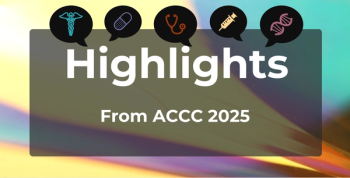
Dr Amy Peterson on the Importance of Pediatric Lipid Screening
Amy Peterson, MD, professor in the Department of Pediatrics at the University of Wisconsin, discussed current pediatric lipid screening guidelines and the potential evolution of pediatric lipid screening in the coming years.
Amy Peterson, MD, professor in the Division of Cardiology in the Department of Pediatrics at the University of Wisconsin School of Medicine and Public Health, discussed the National Heart, Lung, and Blood Institute (NHLBI) pediatric lipid screening guidelines endorsed by the American Academy of Pediatrics (AAP). She also spoke to the potential evolution of pediatric
Transcript
What have the NHLBI and AAP guidelines on pediatric lipid screening gotten right, and how can they further influence public health policies?
The National Heart, Lung, and Blood Institute guidelines, which were endorsed by the American Academy of Pediatrics, really got it right in a lot of ways. That was the first set of guidelines to recommend checking all children's cholesterol levels between 9 and 11 years of age, which was a huge breakthrough and a real recognition of the fact that relying on a child having risk factors for high cholesterol is not a good way to find all children with high cholesterol—it's just not as sensitive an indicator as we would like.
In addition to that, those guidelines also recommended selective screening, so actually going ahead and screening those children with risk factors as young as 2 years of age, which is a great way to find severe elevation from genetic high cholesterol at a young enough age where effective intervention is actually possible.
Given the growing focus on early prevention, how do you see pediatric lipid screening evolving in the next 5 to 10 years, especially with new technologies like genetic testing becoming more accessible?
Pediatric cholesterol screening is a great concept, but we know the implementation of it is, unfortunately, lagging behind the guidelines. Right now, in the US, about 10% to 20% of children actually get their cholesterol checked. Where I think the new technology is really going to be helpful is by allowing the electronic health records to prompt physicians to order cholesterol panels on children, to use point of care testing to just grab them while you've got them in clinic and get that blood draw done. And also having algorithms in the system to help doctors interpret cholesterol panels to make sure that the children with severe elevations are identified properly and can get the right care.
With the ongoing discussions around personalized medicine, how can pediatric screening programs better address children who are genetically predisposed to cardiovascular diseases but may not present with traditional risk factors early on?
That happens all the time in my clinic. I'm very fortunate that I work with a group of really phenomenal pediatricians who do an excellent job screening children for high cholesterol. And all the time in my clinic, I have a child coming in with high cholesterol, and it's very clear that it's genetic. And usually, we're the first person telling the family that this is genetic high cholesterol, and we're usually informing the parents that they also have genetic high cholesterol and that they require a certain level of care as well. So, universal cholesterol screening can play a phenomenal role in identifying people with genetic high cholesterol to make sure that they get the care that they need.
Newsletter
Stay ahead of policy, cost, and value—subscribe to AJMC for expert insights at the intersection of clinical care and health economics.









































